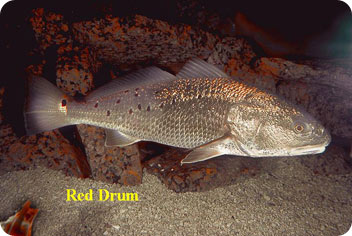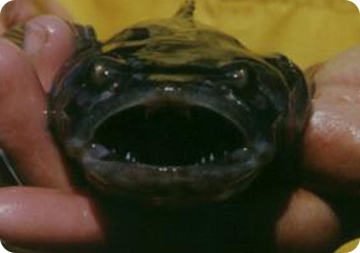Radio Program
Our regular Science and the SeaTM radio program presents marine science topics in an engaging two-minute story format. Our script writers gather ideas for the radio program from the University of Texas Marine Science Institute's researchers and from our very popular college class, Introduction to Oceanography, which we teach to hundreds of non-science majors at The University of Texas at Austin every year. Our radio programs are distributed at to commercial and public radio stations across the country.
Some of the tiniest creatures in the ocean play a big role in controlling our planet’s temperature. But as the temperature goes up, the overall volume of these creatures appears to go down, which reduces their ability to keep Earth from overheating.
The tasty fish known as red drum can be one of the loudest fish around -- sometimes loud enough to hear from above the water. In fact, that’s where it gets its name -- it makes a sound like a drum.

For houseboaters in Sausalito, California, it was a spooky mystery. In the 1970s, many began to hear an odd humming noise at night. It became so loud that it kept many people awake. Some blamed a power plant, others said it was an experiment by the navy, and still others blamed it on extraterrestrials.

The odds of survival for a young fish aren’t very good. It needs to grow and develop in a hurry to evade predators and adapt to daily changes in the environment. But for fish whose mothers were exposed to industrial pollution, the odds are longer still. They may develop more slowly, making them easier targets -- endangering not only individual fish, but entire populations.
The 1770s were a stormy time in southern Georgia, with perhaps a half-dozen tropical storms plowing through the region. The first couple of decades of the 1800s were stormy, too, along with a couple more in the mid 1800s.
Written records of the storms range from spotty to non-existent. But scientists have found strong evidence of the storms in another kind of record: tree rings.
The oceans are always changing. In the early 1990s, for example, several studies showed that the north polar ice cap was getting thinner. Scientists confirmed the trend later in the decade from below the ice cap -- during a series of research cruises aboard U.S. Navy submarines.
The project was called SCICEX -- the Scientific Ice Expeditions. It began with a test run in 1993, and continued with annual cruises aboard nuclear-powered attack submarines from 1995 through ’99.
Since the days of Ernest Hemingway, it’s been the ultimate symbol of man versus the sea: A spirited fight between an angler and a marlin or sailfish, its sleek body whipping back and forth as it leaps from the water.
When fish and other creatures swim into the crater of a submerged volcano in the south Pacific, they’re entering a strange environment known as the “Moat of Death.” Temperatures in the moat are up to almost 180 degrees Fahrenheit. Toxic waters kill almost anything that enters, so dead organisms pile up on the bottom of the moat.
There’s nothing quite like the colors of a clear ocean or sea. Shallow seas and lagoons often show a crystalline aqua color, like a perfect sliver of turquoise. And the deep oceans look darker -- a field of navy blue as far as the eye can see.
The color of the oceans or seas depends on how clear they are. Near river deltas, they look brown because of silt in the water. And “blooms” of algae can color the water brown or red.
But in its purest form, the water appears deep blue. And it looks that way for the same reason that the sky looks blue.
The word “steroids” may conjure images of bulky baseball players, or of cancer patients undergoing treatment. But steroids aren’t just drugs for bodybuilders and medical patients. Naturally occurring steroids are important hormones that help control reproduction and other bodily functions.
Steroids may also play a role in how we handle stress. To find out more about that, researchers are studying steroids in fish to see if they are involved in adapting to environmental stresses.


